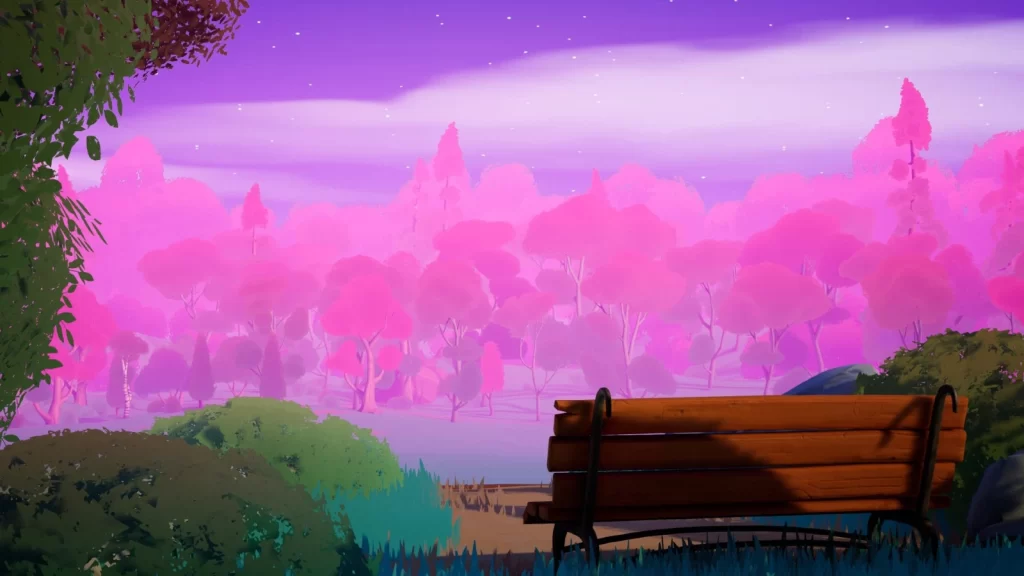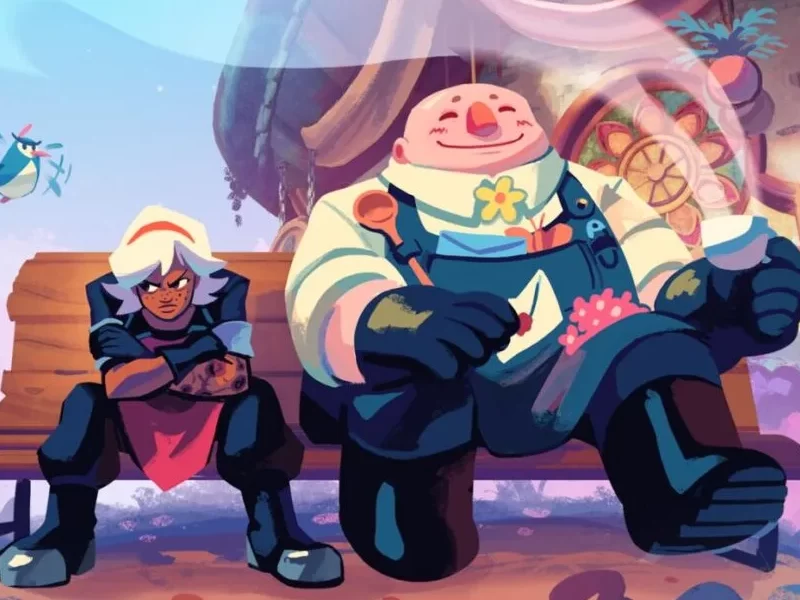Wanderstop caught my interest when the trailer premiered back at Summer Games Fest 2024. I remember watching the trailer thinking, “Oh man, a cozy game that has something a little more that’s just waiting for me to explore?? Sign me up!”. I kept an eye on it and when the demo dropped during Steam Next Fest, I knew I had to check it out. You can read my initial thoughts on the game’s demo here.
While the demo did give me some idea of what to expect, it certainly did not paint the whole picture. While I mentioned in my demo review I had anticipated a shoe was going to drop, I didn’t expect it to drop in the way it does. It felt like there could have been some psychological horror vibes, but what I got instead was so much more than that: a cozy game for the goddamn soul.
I’m going to be straight with you: stop reading my review right now and go play the game. Just go play it. I don’t grade or score games but if I did, it would get a 10/10, 5/5, A+. Whatever the high grade, it gets them. I cannot recommend this game enough. This is a game that’s better experienced without knowing nothing at all. You’re better off exploring the journey Alta goes on without anything being spoiled. Read reviews after you’ve finished the game instead.
But again, I cannot stress it enough: just play the game. It’s worth it without even knowing anything about it.
But, if you’re still here, let’s look at why I loved Wanderstop so much.
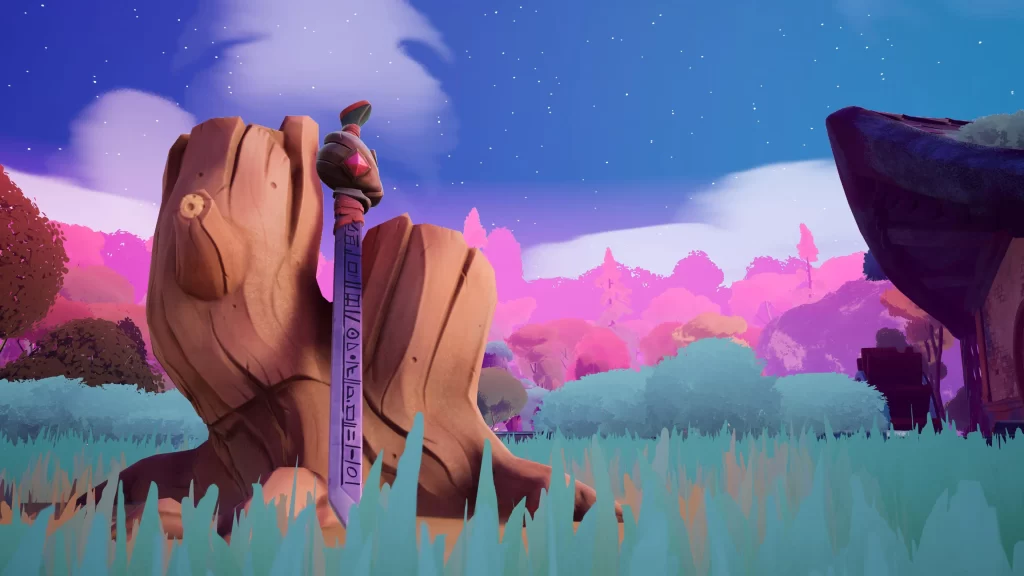
// The Consequences of the Grindset Mindset
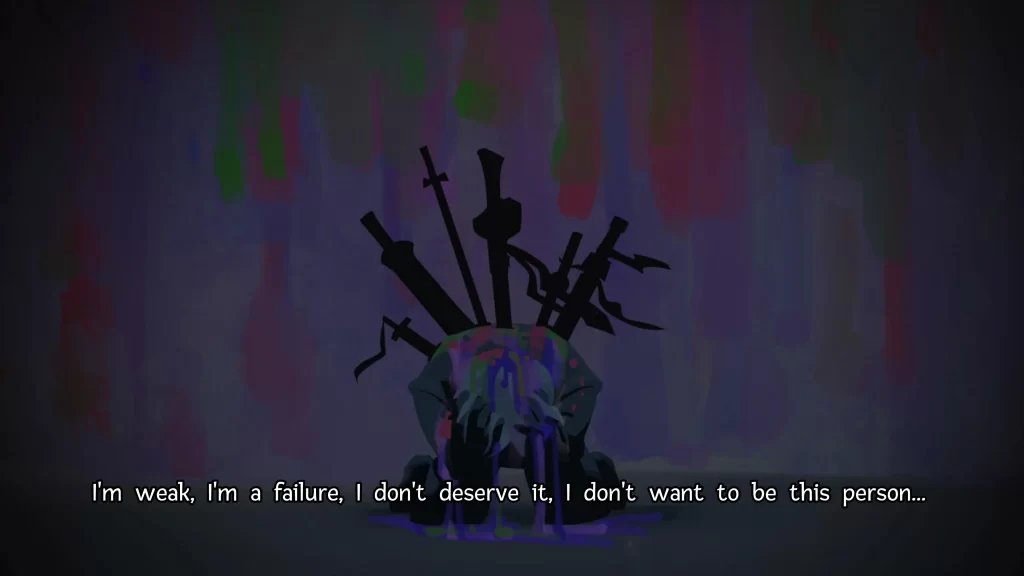
Wanderstop is about Alta, a fighter who went undefeated for three and half years until she lost, twice. She couldn’t understand how she lost as she had trained to be the very best. To try and get herself back on top, she decides she must seek out her mentor who lives on the edge of the forest. While running through the forest, her strength begins to weaken, her sword too heavy to carry. She leaves it behind, only to collapse shortly after. She awakens on a bench sitting beside Boro, the proprietor of the tea shop, Wanderstop, she finds herself at. He makes her an offer to join him in taking care and running the shop. She’s reluctant and disinterested, as her single focus is getting to her mentor so she can return to being the best fighter ever. After some time, though, she agrees to stay, only until she has the strength to pick up her sword again.
Alta’s reluctance and disinterest in having to do anything with the shop comes from the fact that she looks at is as a waste of time. She should be focused on returning to being the best. But she’s stuck between a rock and a hard place because right now, she cannot pick up her sword and any trip she takes in the forest ends with her collapsing from exhaustion and right back in the clearing, on the bench with Boro. So, because she can’t simply just relax as Boro suggests, she instead demands tasks to do around the shop. Boro tells her she can tend to the shop—cleaning the grounds, planting plants to use as ingredients in the tea she makes and taking orders from customers who also find themselves in the clearing.
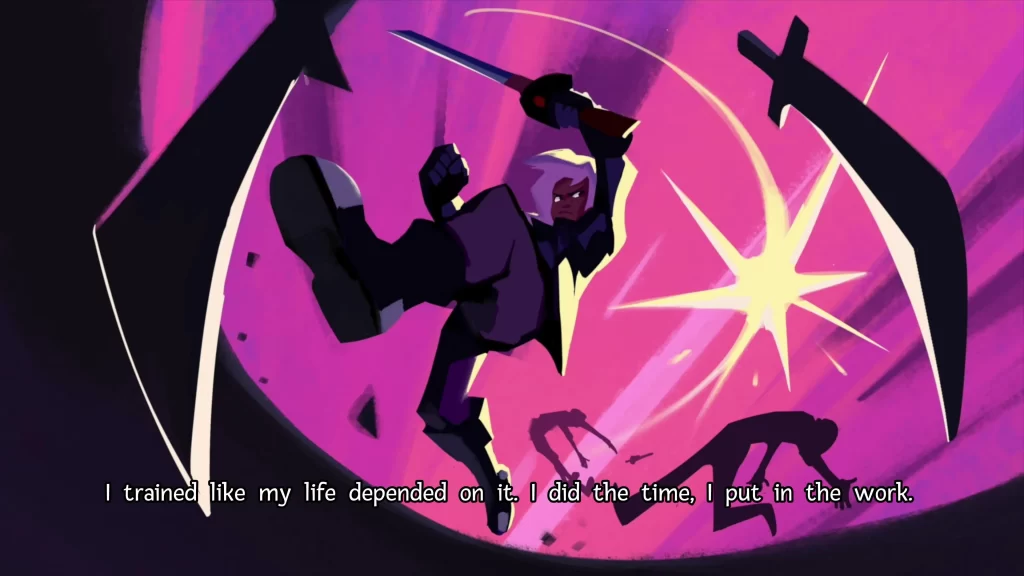
It’s through these conversations with Boro you begin to learn more about Alta as a character: her pure dedication to being the best fighter ever means she’s constantly on the go. She constantly must be doing something productive otherwise, what’s the point? Alta suffers from what we call the “grindset mindset”, someone who works extremely hard at something to achieve their goals, often at the expensive of both themselves and others. You’ll often find people with this mindset constantly punishing themselves for not doing anything productive with their downtime, which is something Alta frequently does. But we all need downtime, it’s necessary regardless of what you or anyone else tells you. Don’t feel guilty watching that movie or TV show or playing games or literally doing whatever activity it is you enjoy doing to relax.
The problem when we can’t find enjoyment in doing nothing at all and we constantly feel the need to be productive is it often leads to burn-out, which is clearly something Alta is experiencing. Her inability to pick up her sword and constantly getting exhausted while in the forest is just a way it manifests in her in this magical forest. Boro encourages her to find comfort and solace in doing nothing and she often tells him she can’t—she must be doing something. She also doesn’t understand why this is happening to her now. This has never happened to her before. Boro suggests that maybe that’s exactly why it is happening now—all she kept doing was pushing herself so hard, at some point, it was going to catch up to her. Maybe this was that point. And he’s not wrong either—if you constantly push yourself over and over and don’t take any time to relax, take a break, do nothing, at some point, it will catch up to you.
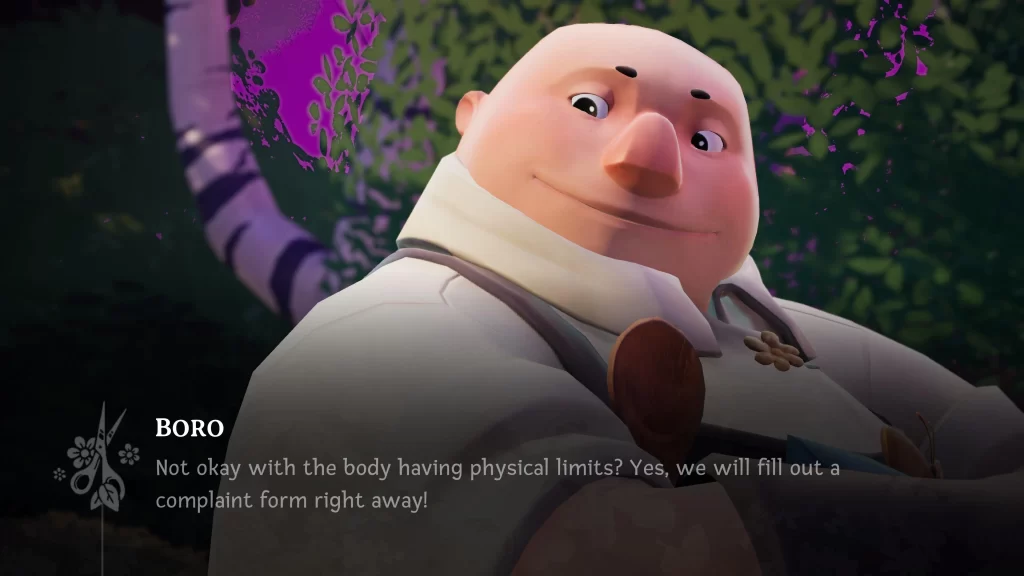
Part of Alta’s problem though is not only does she have the grindset mindset, and is suffering from burn-out, it’s also clear Alta is suffering from sunken cost fallacy, too. During some of her conversations with Boro, she mentions that she’s dedicated her entire life to being the best fighter possible. She’s not willing to throw all that away now because what does that mean for her? Did she spend her whole life for nothing if she just stops now? It’s a scary thing when you suddenly are faced with not being able to do the thing you’ve been doing your whole life, especially one you feel so passionate about. It’s even worse when you’ve convinced yourself this is the only thing you’re good at, which is exactly what Alta has done. It’s hard to process you may have to change your goals in life because how can you when you’ve convinced yourself this is the only thing you’re good at?
You learn all this within the first few conversations you have with Boro, who is the most patient, understanding, caring, and kind NPC I’ve ever had the pleasure of getting to know in a video game. Despite Alta’s thorny attitude, he takes no notice of it. I hated some of the initial replies you could choose because he was just so nice and some of the replies were just, not necessarily mean but not kind either. But it made sense considering where Alta’s attitude was at the time.
// Things to do around Wanderstop
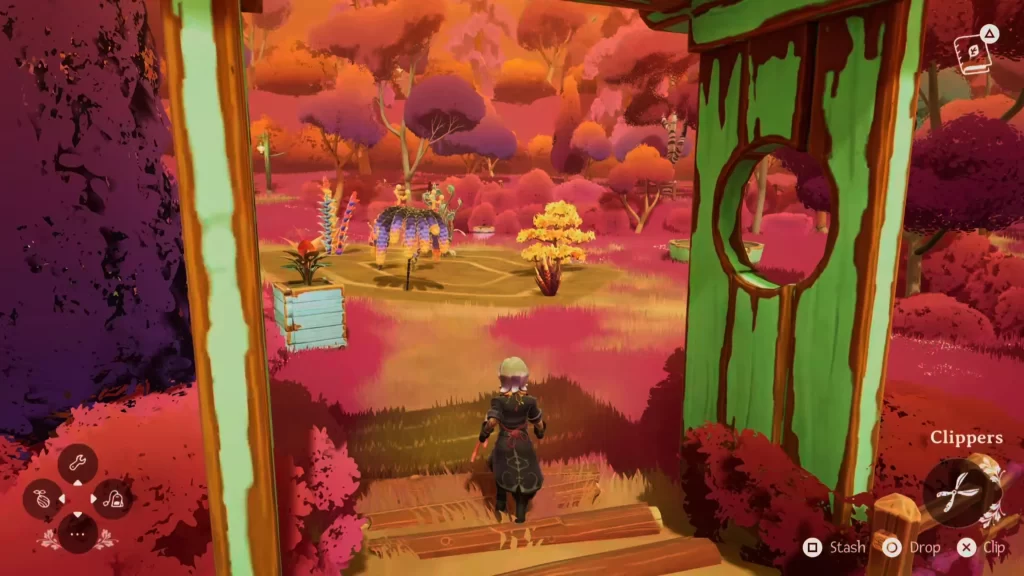
Once Boro gives Alta the rundown of the things she can do here (not the things she should do), the game begins. While Alta can do nothing, since she’s not the type of person to do that, she instead passes her time either tending to the shop grounds by using her shears to trim the thorny weeds that sprout or uses her broom to sweep away leaf piles that form. Sometimes you can find trinkets by cleaning up either or. If general maintenance is not your cup of tea (pun intended), that’s okay as there’s still other things you can do! You can use your basket to swoop up (I don’t have a better way to call it because the animation literally looks like you’re swooping it up) tea bushes for your tea. You then take the filled basket to the maintenance room and pour the leaves into the drying station. Once it dries (it does take some actual time), it’ll form into tea balls. You can also plant seeds that will sprout plants and fruit that will be used as ingredients in your teas.
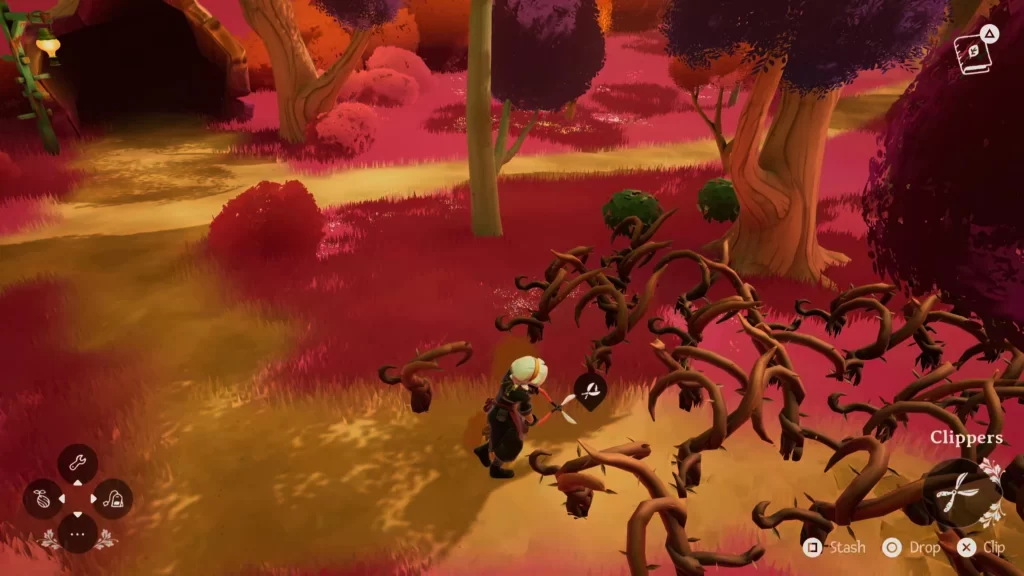
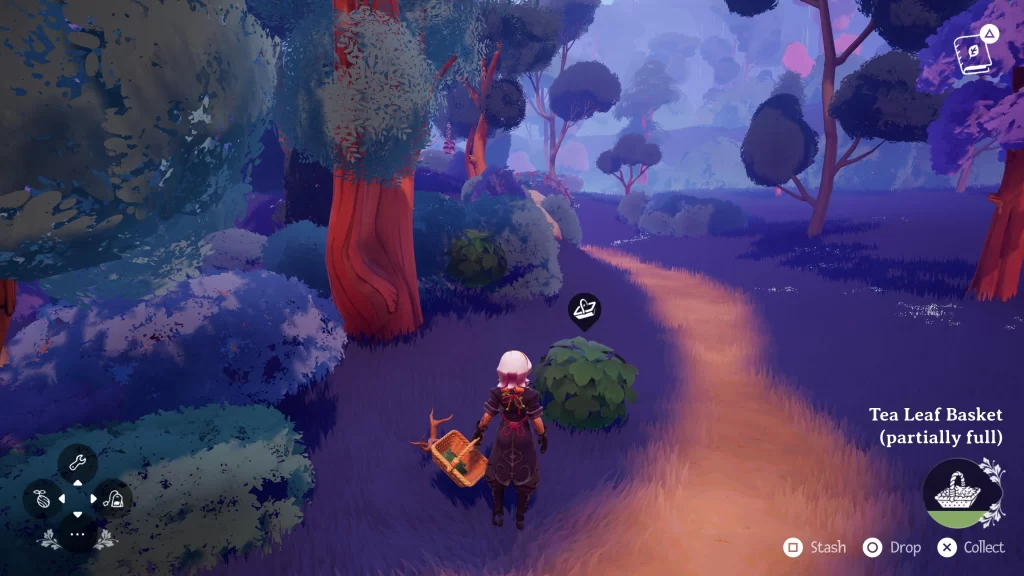
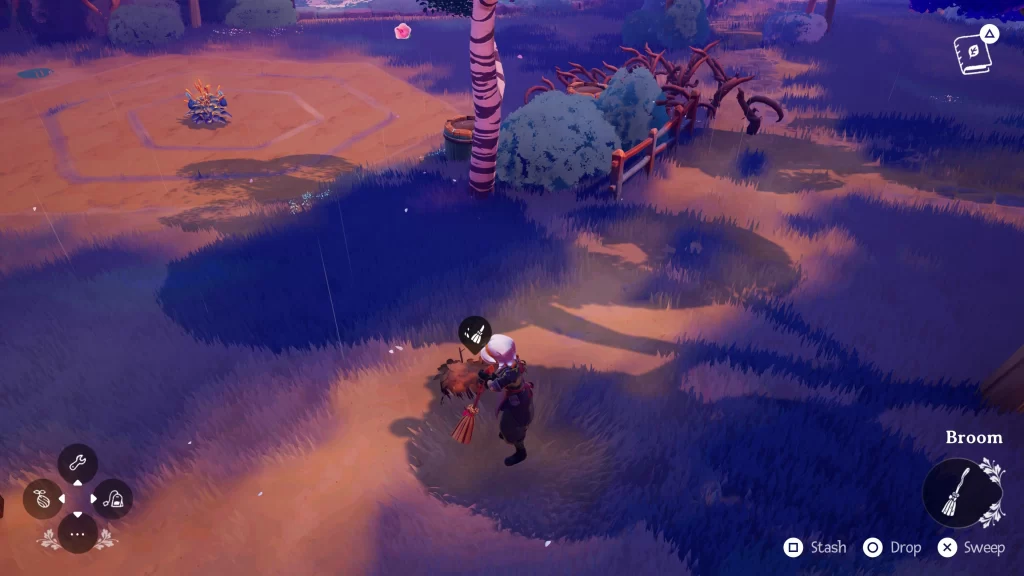
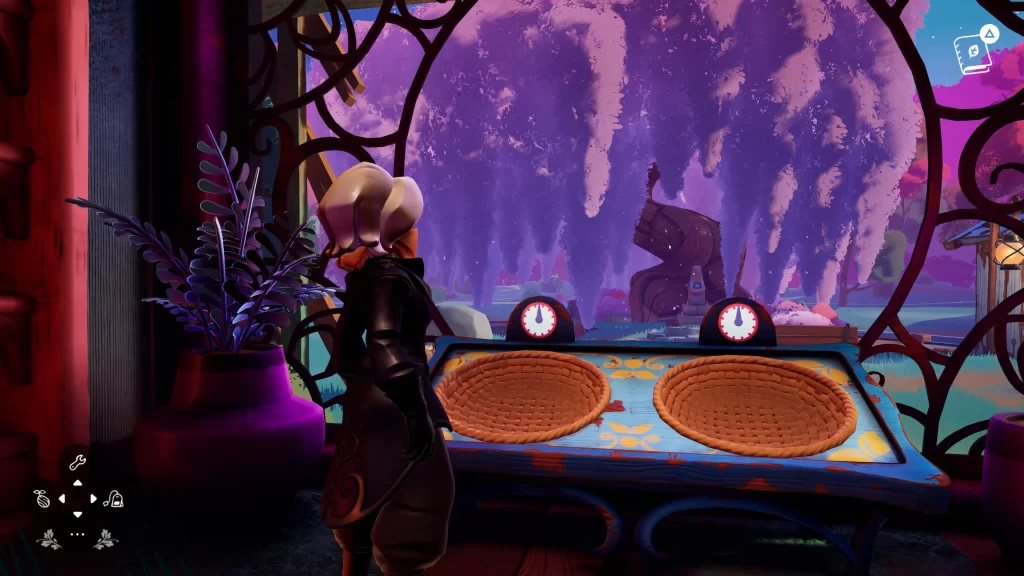
I really liked the system for how you planted seeds in Wanderstop. It works on a hexagonal grid pattern. You plant seeds in a hexagonal tile and then, depending on whether you wanted a small hybrid plant or a large hybrid plant, you plant seeds in different shapes. For a small hybrid plant, you plant your seeds next to the initial plant on either side, forming a line. Once you do that, the middle plant will turn into a “plant egg”. Once the “plant egg” is watered with your watering can, it’ll form into a small hybrid plant. The type of plant that spawns depend on the seeds you use.
For a large hybrid, you instead plant the seeds in a 3-pointed star (one at the top of the middle plant and two at the bottom on either side of it). Again, once you water the “plant egg”, a large hybrid will spawn. Much like the small hybrid, the type of plants that spawn depend on the seeds you use. For both, you can use one colour for the initial seed, or you can use a different colour for the outside, but the seeds on the outside must be the same colour.
The fruit that grows on the plants can be harvested for ingredients in your tea. However, the plants only produce a finite supply of fruit—it’ll stop producing fruit. You can simply cut down the plant, if you want, or you can use mushrooms to shrink the plant down so it can be transplanted into a pot, which then can be potted into a planter.
Mushrooms can also be used to change the colour of the fruit as well as duplicate plants. They’re planted around the plant in a 3-pointed star, much like you do to make large hybrids.
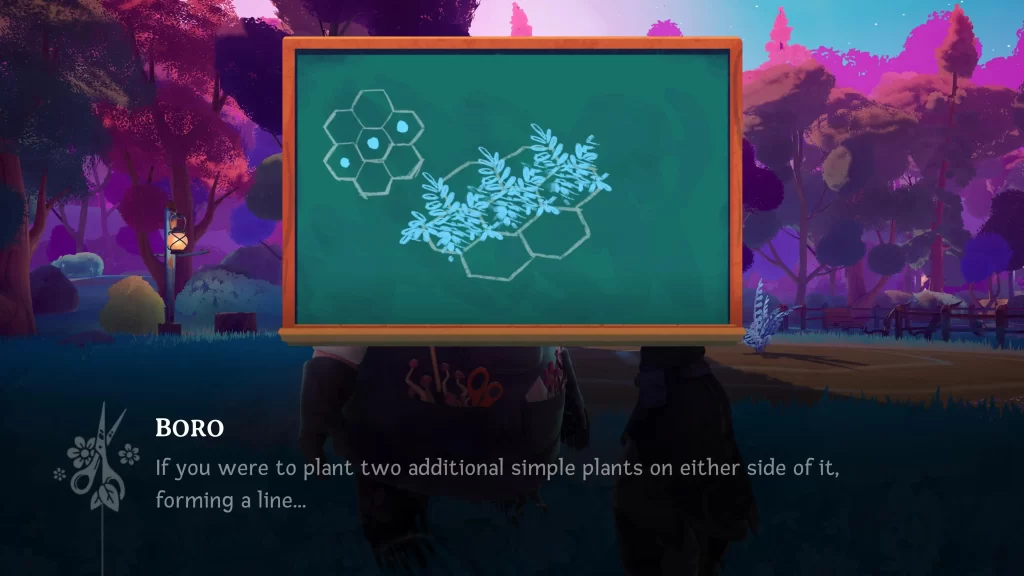
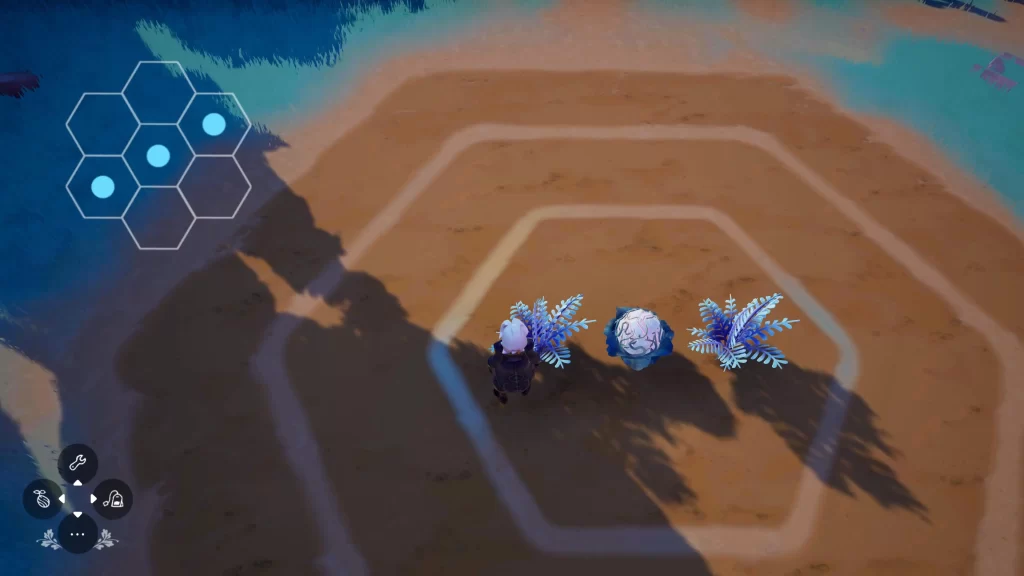
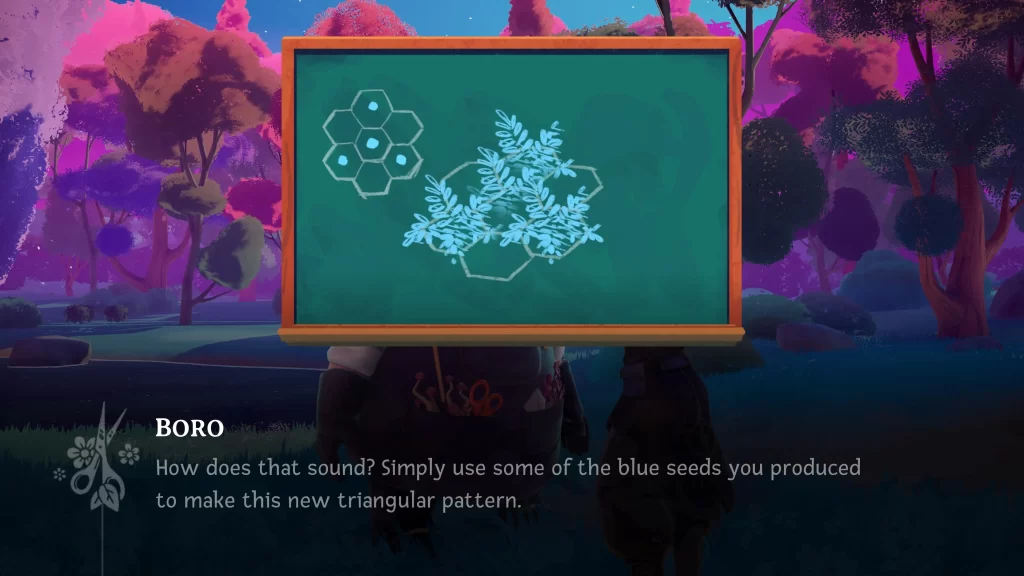
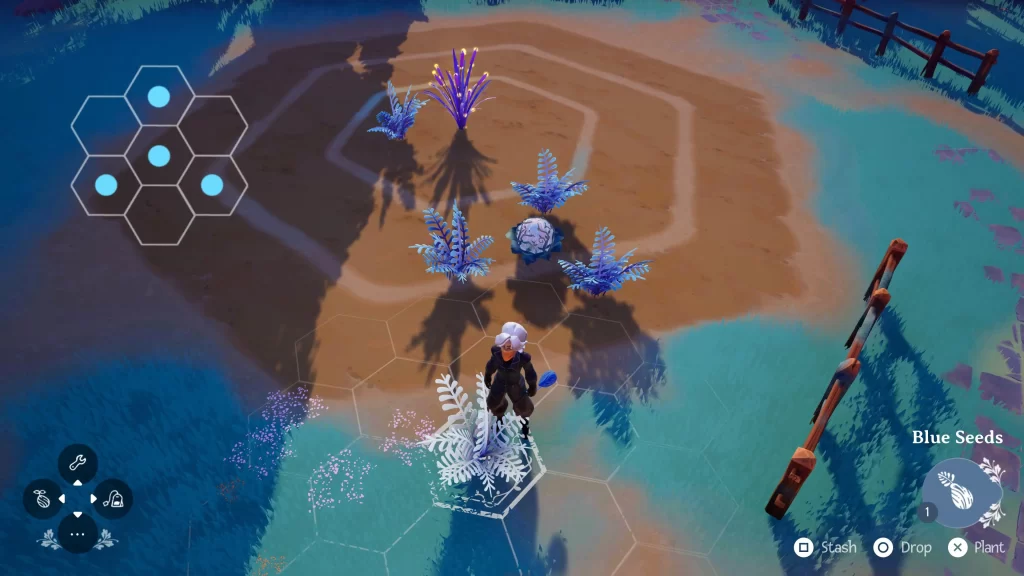
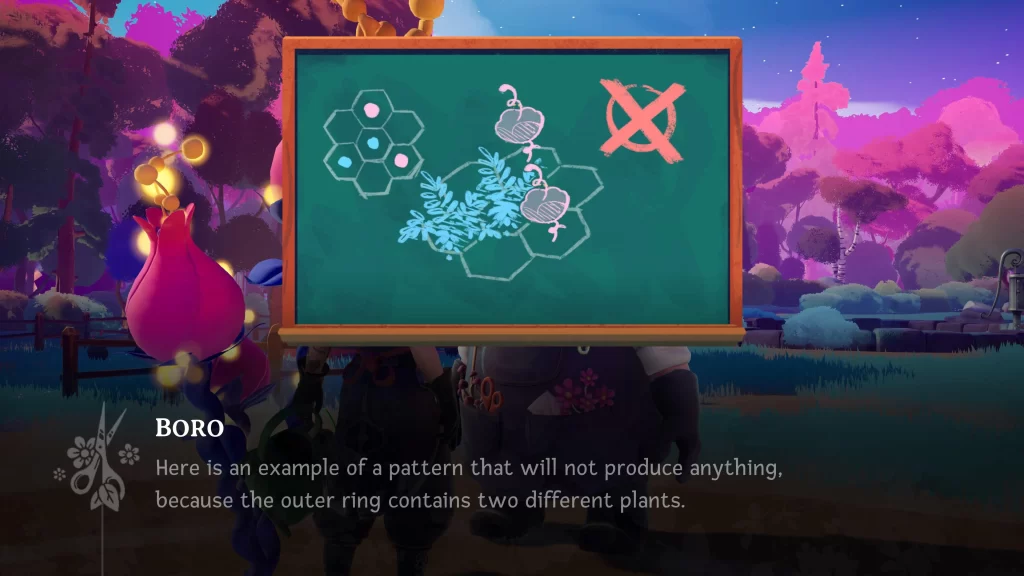
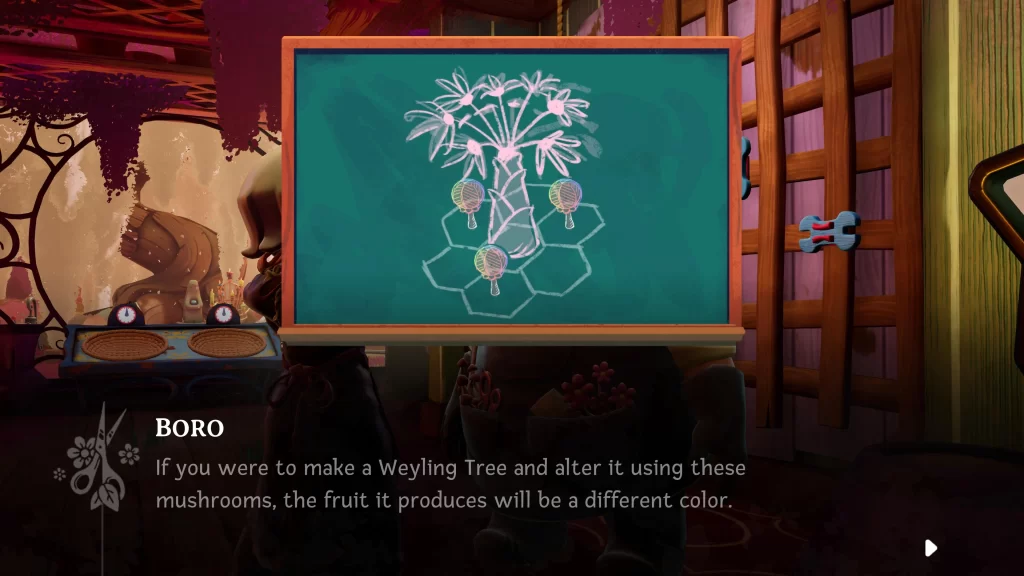
Once it’s time to make tea, you do so using a large contraption inside the tea shop. You climb up on the swivelling ladder, pull the rope to pour the water, climb down a smidge and use the bellows to heat the water. Once the water is heated, you swivel the ladder a smidge to the right and kick the water flow valve, sending the water to the infuser. You swivel the ladder again to the right, toss your ingredients into the infuser, swivel once more, kick another water flow valve, and then you can either climb down now or swivel once more back to the start and climb down. Grab a teacup and put it on the pouring station and then use the rope to pour the tea into the cup.
Don’t worry if you overpour, there’s no consequences here for that. I poured a perfect cup once and Boro congratulated Alta for doing so, but then told her there was also nothing wrong with overpouring either. Plus, to be honest, the animation for it looks cool.
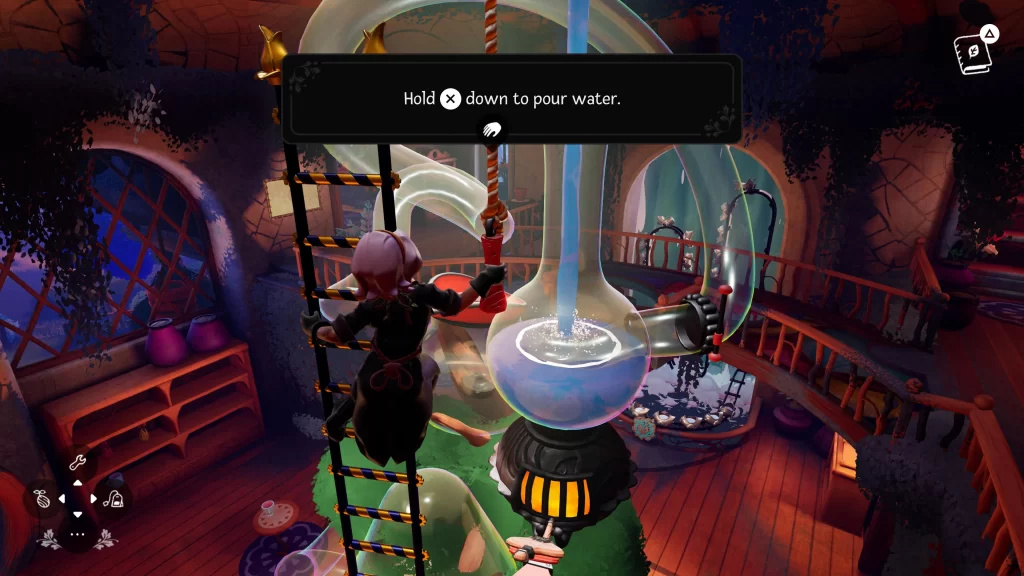
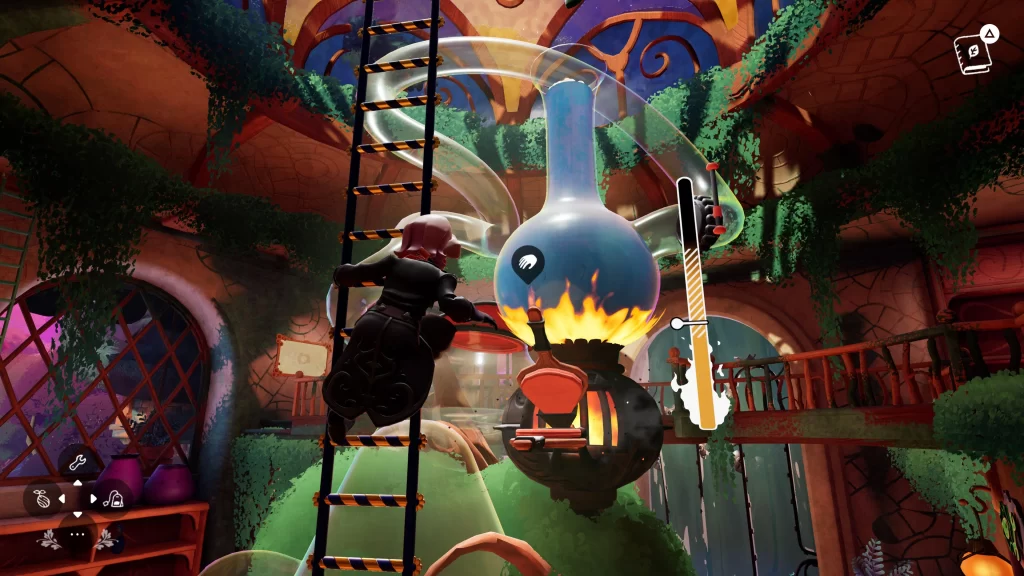
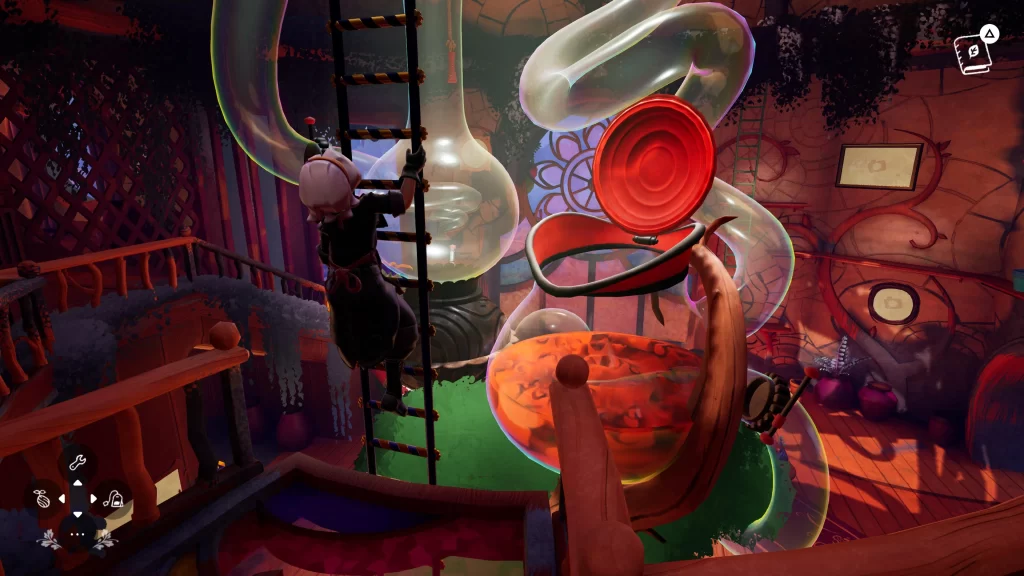
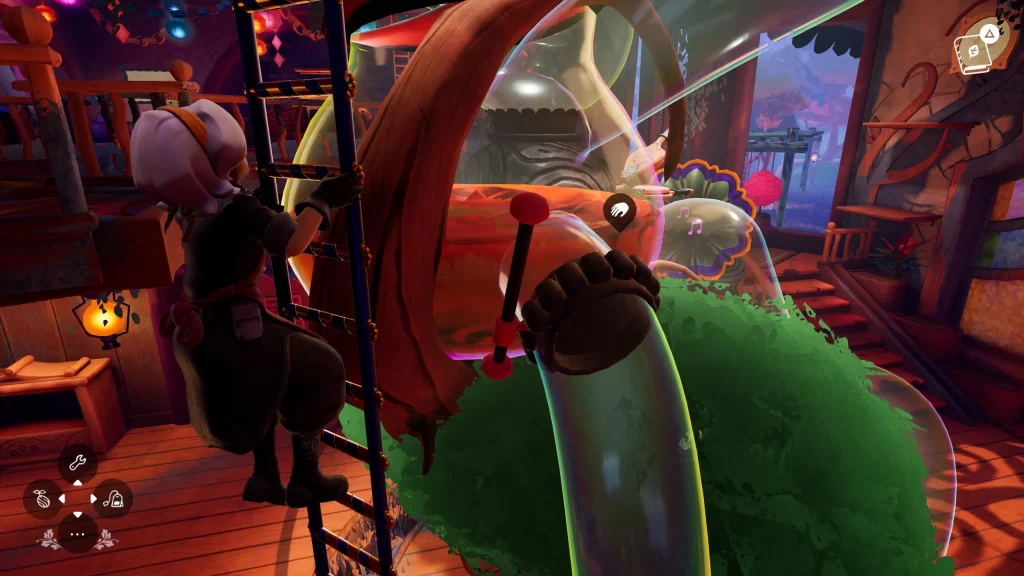
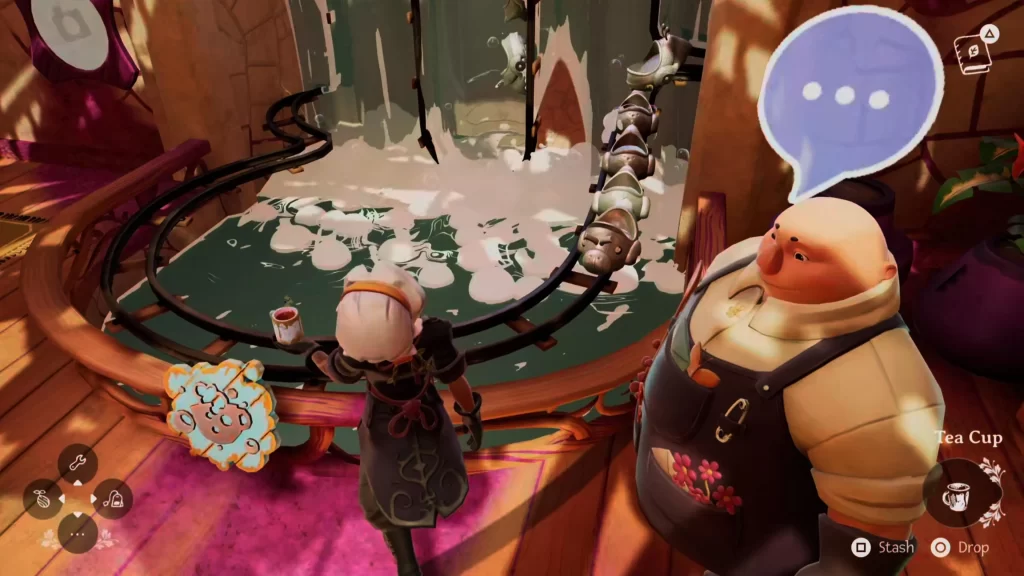

Once the tea drinker is finished drinking, take the dirty teacup to the choo-choo train dishwashing station and it’ll come out in the maintenance room, nice and clean.
Got leftover tea you don’t need to drink? Feed it to the puffins! Puffins are these adorable bird creatures you’ll find on the grounds. If you let them drink the teas, their colours change into the tea they drank. They also can get up to their own shenanigans; sometimes you’ll discover they have items in their beaks. You can pick up them to get the item out of their beaks. Most importantly though, you can pet them! Once you start feeding them tea, they’ll start coming to you more often, so I always used that as an opportunity to pick them up and pet them.
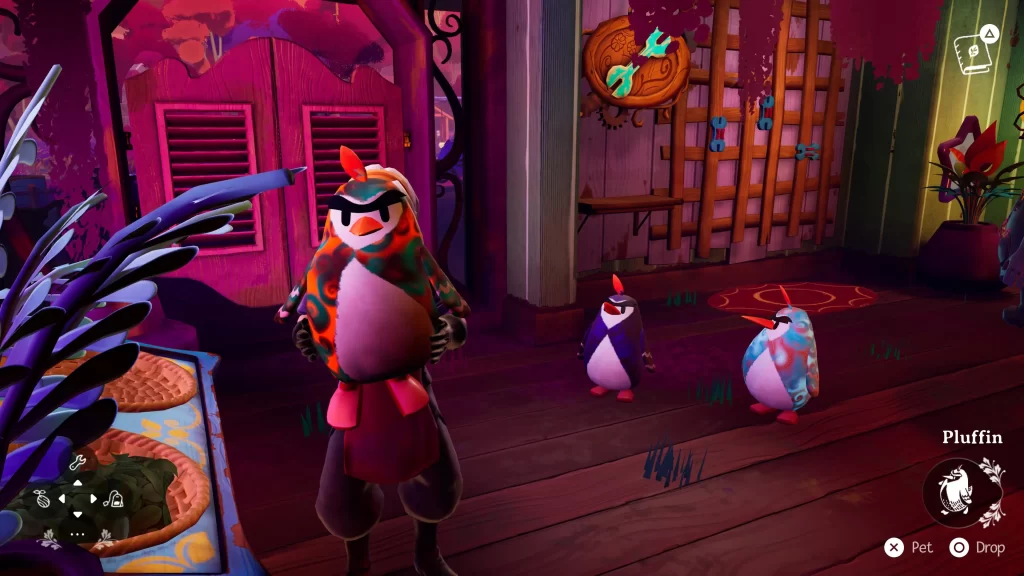
Boro will sometimes also give you tasks to do, should you wish to. Again, you don’t need to do them, but because Boro understands Alta is task motivated, he gives them to her. They include things like decorating the tea shop with pictures or plants or make him a cup of tea.
// Tea for Your Thoughts?
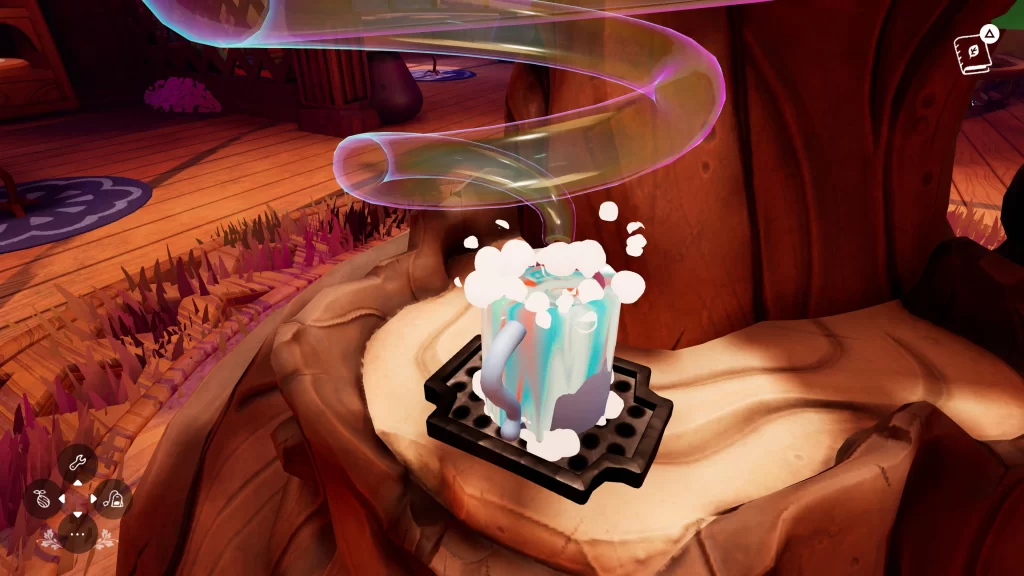
Alta can take time for herself and drink the teas she makes. She can also just brew her own for herself—you don’t even need to put a tea ball inside. You can just toss a fruit in. Each fruit will give Alta the chance to reflect on something, whether it’s learning about her past, something more about how she feels about something, or maybe she’s just reflecting on the flavour of the tea she’s drinking.
I liked this mechanic as it gives us more insight into who Alta is as a person and how she ended up here. In a few of these moments, you learn she clearly has problems with her father, she despised him and found him weak. In one instance specifically, you learn her father lost his job. She reveals even after she learned it wasn’t his fault he lost his job; she couldn’t put aside the hate she felt for him—she could never apologise for the things she said to him. You also learn she always has had an issue with self-control, as she recounts a story about how she beat a kid down for insulting her father. Even after he was clearly injured, she kept hitting him. I’m mentioning this because it’s important, but because I don’t want to give away some major plot spoilers, I’m not saying why.
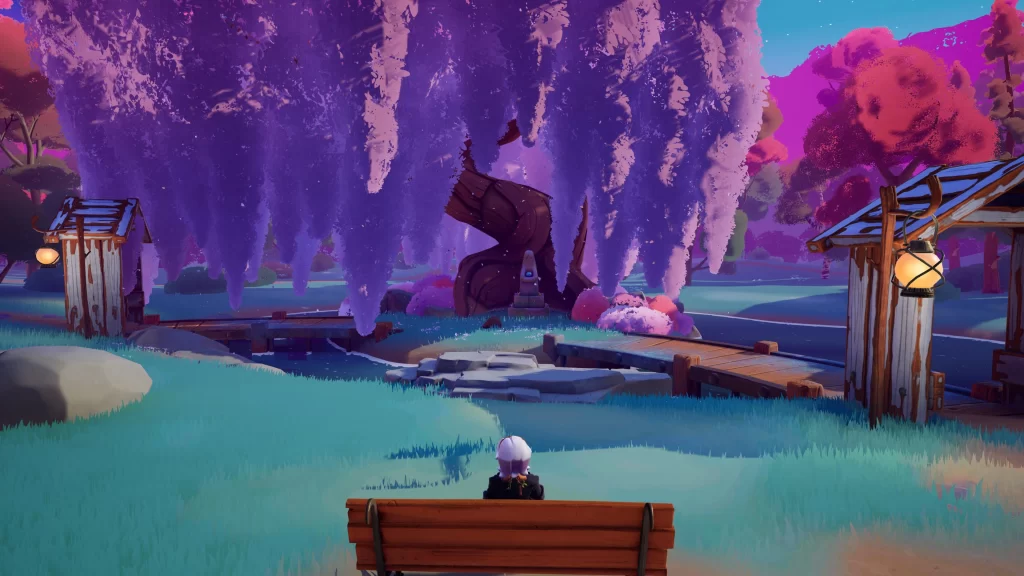
One moment really stands out to me, and ties into her problems with the grindset mindset. Her father excelled at leatherworking. The problem, though, was it wasn’t something he did as his job—it was a hobby. He would make leather gifts for people for holidays and birthdays. Alta hated that, she felt like if he was so good at it, it should have been something he pursued as a means of earning income, not just something he did for the fun of it. Again, with the grindset mindset, if you’re not making money off it, then why do it at all? Time is money, after all. This attitude is very prevalent in creative spaces. Ask anyone who does anything artistic as a hobby, they likely have a story where they’ve shown someone something and have been told, “you should sell that! You’d make lots of money if you did!”, ignoring the fact entirely that maybe the person doesn’t want to. Maybe they just enjoy creating for the sake of creating. More often than not, when you start monetizing your hobbies, you often find yourself enjoying them less and less because now if you’re not meeting the demand or can’t find clients, well, guess you’re not making money. Or even if you are meeting the demands, the demands are too much, and you can’t keep up with them. Now you don’t even want to create because it’s just stressing you out, leading to burn-out. Alta’s father likely enjoyed leatherworking as a hobby because it was something that brought him joy, not because it was something he wanted to do to make money. Not all our interests have to be avenues to make money, and it sounds like Alta’s father understood that. Alta, on the other hand, did not and it fanned the flames of hatred she already felt for her father.
// Here Come the Customers
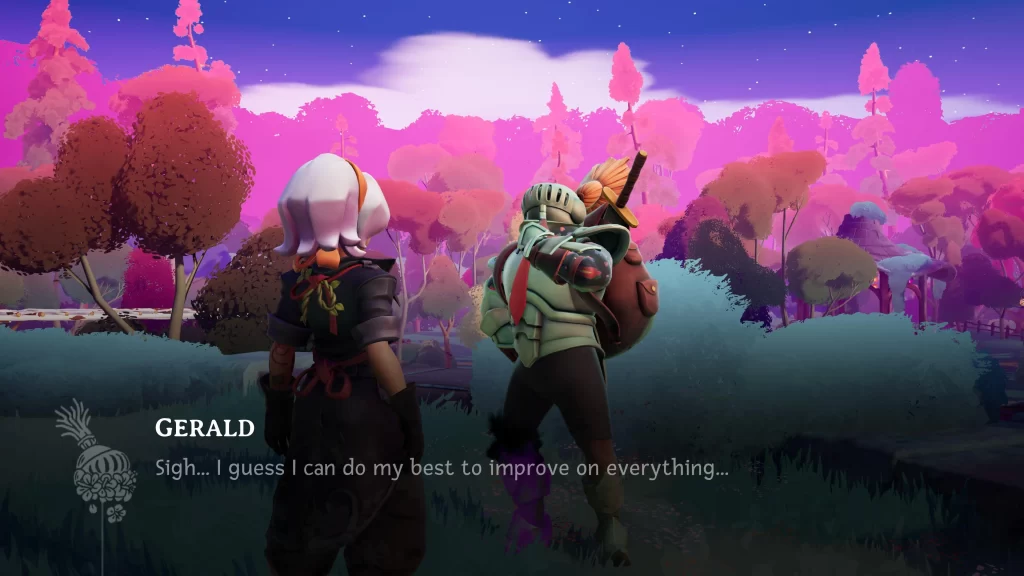
Since this is a teashop, you will find the teashop populated with customers. It’s quite the diverse cast of characters too, not necessarily just in their looks, but also in their mannerisms, their tastes, and their problems. They also have their own sounds—when you speak to a character, since majority of the characters are not voiced, they have specific sounds they make for the dialogue that make sense for that character. They also have their own theme songs, too.
Sometimes, they don’t want tea, and Alta struggles with this at first—it’s a teashop, of course they should want tea, why else would they be here?? Boro, however, explains to Alta that sometimes people will want tea and other times, they just want a place to rest. Wanderstop is here to provide whatever they need.
Even after Boro’s explanation, Alta struggles with this, sometimes telling the person she’ll be making them tea regardless of what they want. But overtime, and through my dialogue choices, Alta begins to accept when people don’t want tea. Maybe they just don’t want it now, maybe they’ll want it later.
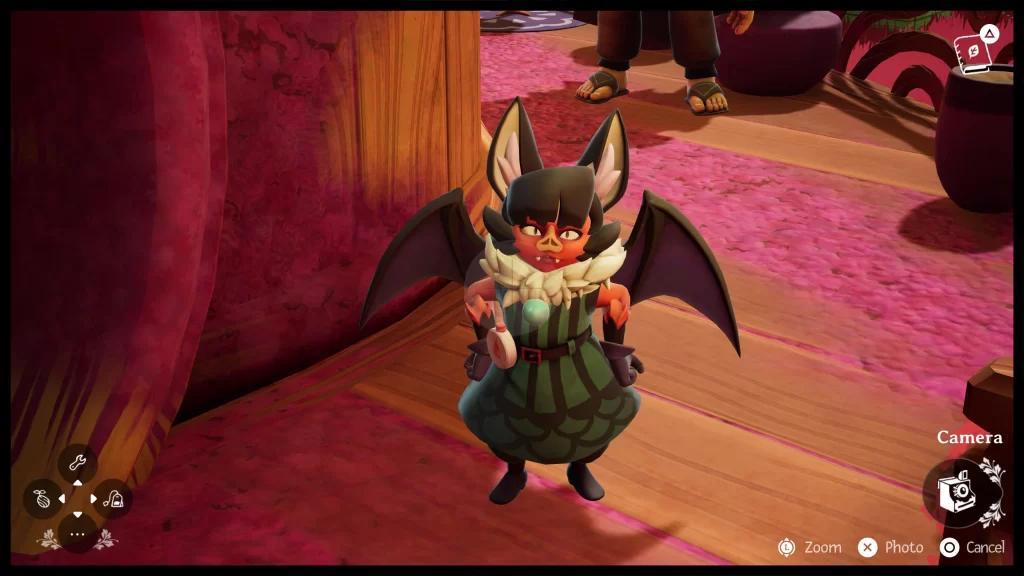
Some of the cast of characters you’ll meet, you’ll learn their names and they’ll stick around for a while, like Gerald, the totally serious knight who is not just trying to become a knight to prove to his son he’s cool, or Demon Hunter, who is trying to provide their services to the local community (even after Alta explained this isn’t a local community—it’s a teashop). There’s also Nana, a savvy businesswoman who sets up shop on the grounds and takes every opportunity she can to tell Alta she’s better at being a businesswoman than Alta is (even though no one buys her products because no one has nanabucks). There’s Ren, a fellow fighter who had previous knowledge of Alta and was delighted to run into her here in the clearing. There’s also Monster, a little girl who shows up to the clearing without her parents and is an absolute menace, but eventually ends up looking up to Alta.
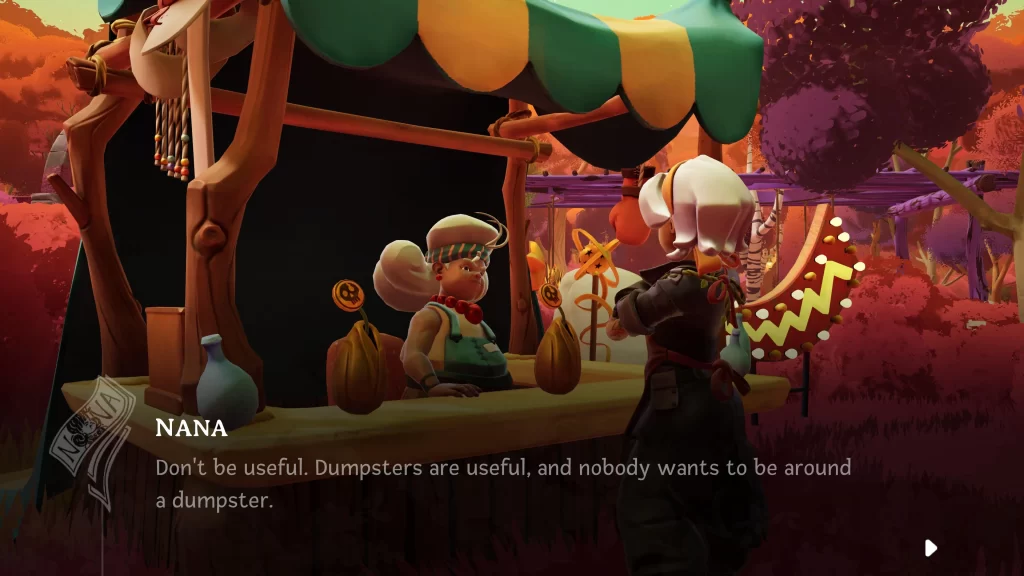
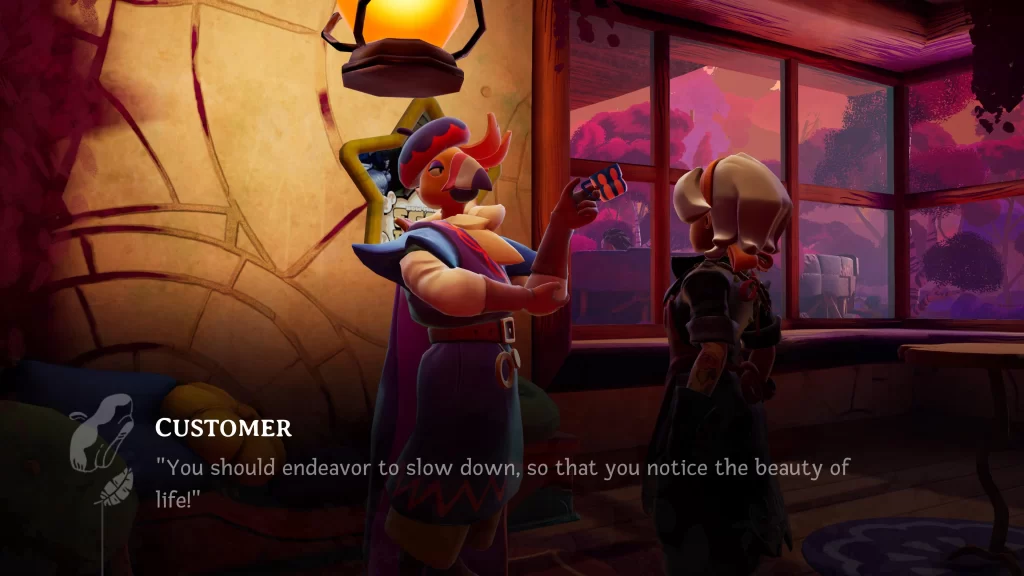
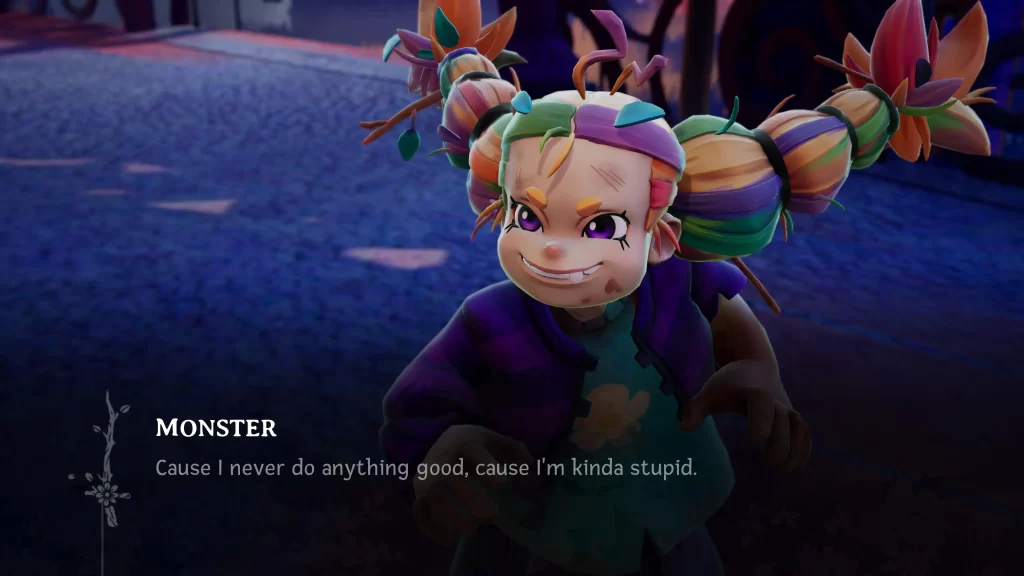
Some of the characters you never learn their names or much about them. You can still figure out their quirks because the game does a good job of representing that, but outside of that, they don’t stay too long for you to learn much about them at all. Sometimes it’s something that sets them off, like one customer leaves because another customer is requesting coffee (this is a teashop, who asks for coffee at a teashop??), another leaves simply because they’re feeling better. It feels fitting though because sometimes people are in your life for a long time, but others are only there for a short while.
Which is a good segue to my next point.
// Change is Coming
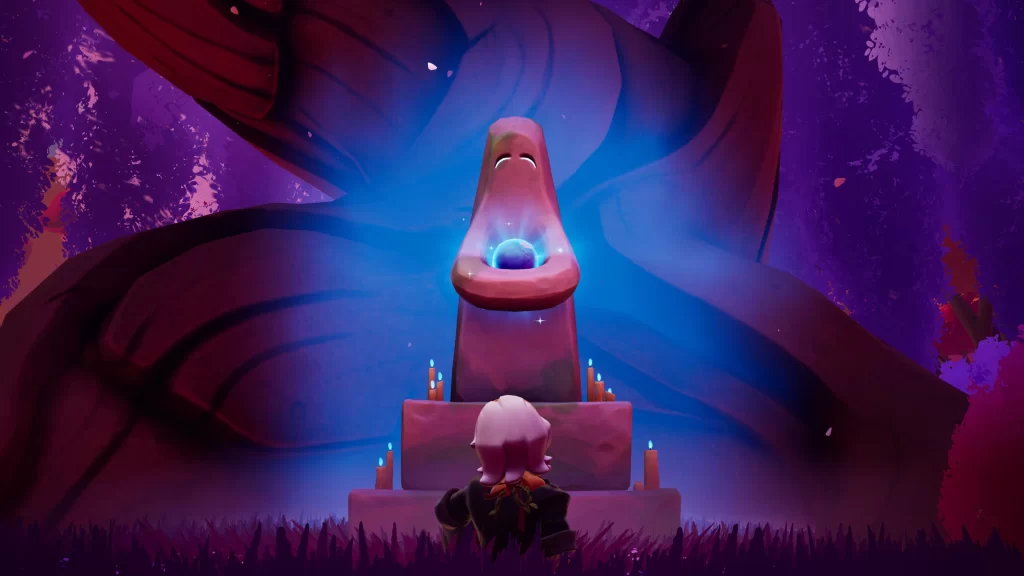
The game operates on a cycle. When you start out, people show up to the clearing. You talk to them for a while, serve them tea as many times as they ask for it, and like I previously mentioned, for some customers it may be a single cup and they leave, whereas for others, they’re in for the long haul. That being said, “the long haul” is a bit misleading because something ends up happening after a certain number of interactions. I started counting the interactions between chapters (or cycles) and there doesn’t seem to be a specific amount—it just happens every time.
After a while, when Alta tries to speak with the customers, weird music starts to play. It’s very uneasy and off-putting, especially because the customers can no longer speak. They simply reply with “…….”. The first time this happens, I was speaking with Gerald, the total serious knight. He had been cursed, so I figured maybe it just had something to do with that. But, then it happened to Demon Hunter too. When I went to speak with Boro, he explained that this happens, and Alta needs to go to the shrine and sit in front of it, letting her mind wander. But only when Alta is ready.
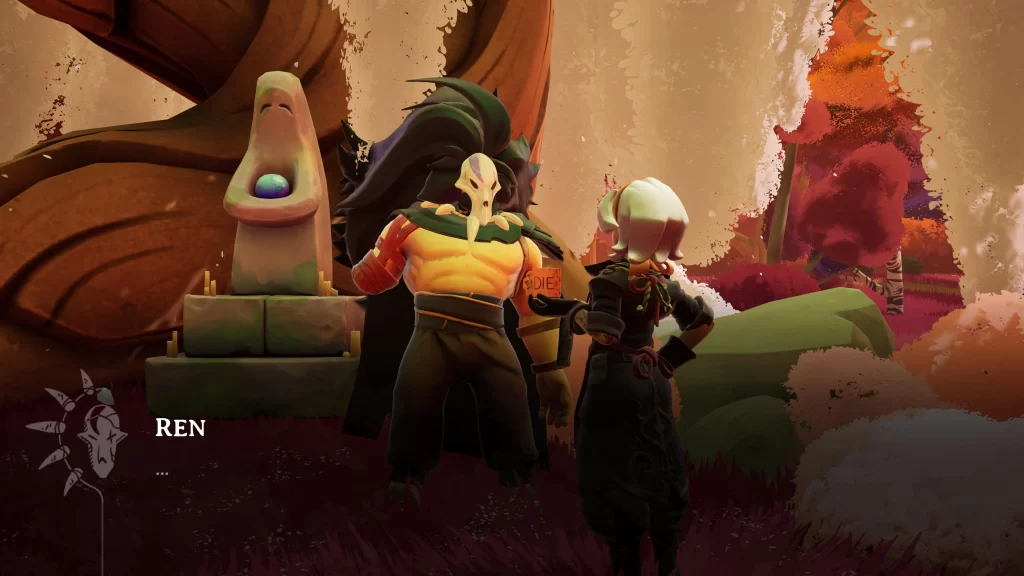
I didn’t have anything particular to do since my two customers no longer were on speaking terms with me, so I off to the shrine I went. I interacted with it, and Alta let her mind wander.
A cutscene plays with Alta running through the forest, much like the opening of the game. Alta begins speaking to herself, who I dubbed “VO” in my notes since this Alta is voiced over (whereas the other Alta became “Silent” since she doesn’t have any voice over). VO Alta begins telling Silent Alta that she must work harder, she couldn’t give up or rest when she, once again, becomes exhausted like she did when she first was in the forest. This continues until Alta collapses and finds herself sitting on the bench with Boro. But the clearing is now different. The colours are different than when I had left it, things have been moved around, my plants are gone, the trinkets I found are gone as were the cups. All of it is just gone.
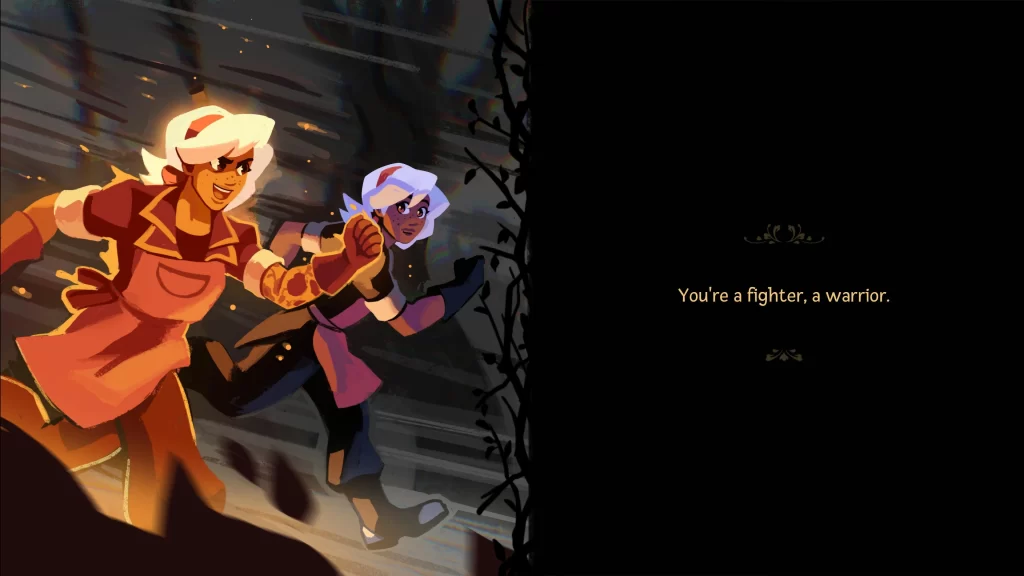
And even worse, I quickly learn so too are Gerald and Demon Hunter.
This is where the game got a little too real for me as I started to feel like I had made a mistake. Maybe I shouldn’t have sat in front of the shrine yet, maybe I should have kept tending to things around the clearing, maybe some more interactions would have come up. I mean, I left, and poor Gerald still had his curse—there had to have been something more I could have done. And with Demon Hunter, I felt like they wanted to get to know Alta, but Alta kept cutting them out. Maybe if I hadn’t used the shrine yet, we could have gotten that interaction.
When Alta speaks with Boro regarding this, I chose the dialogue option that said it like it felt like there was so much still to do because I truly felt that way. But as Boro tells Alta, maybe we will get the chance to do something in the future, but it’s out of our control for now. His words cut deep because I constantly worry about things outside of my control—the joys of living with anxiety. But to have someone so caring and understanding simply say—hey, it’s okay to feel that way, and maybe we will get the chance to do something about this in the future, but for now, there’s nothing we can do about it, and that’s okay too. You don’t have to worry about things outside of your control. I wasn’t expecting the game to get real with me like that.
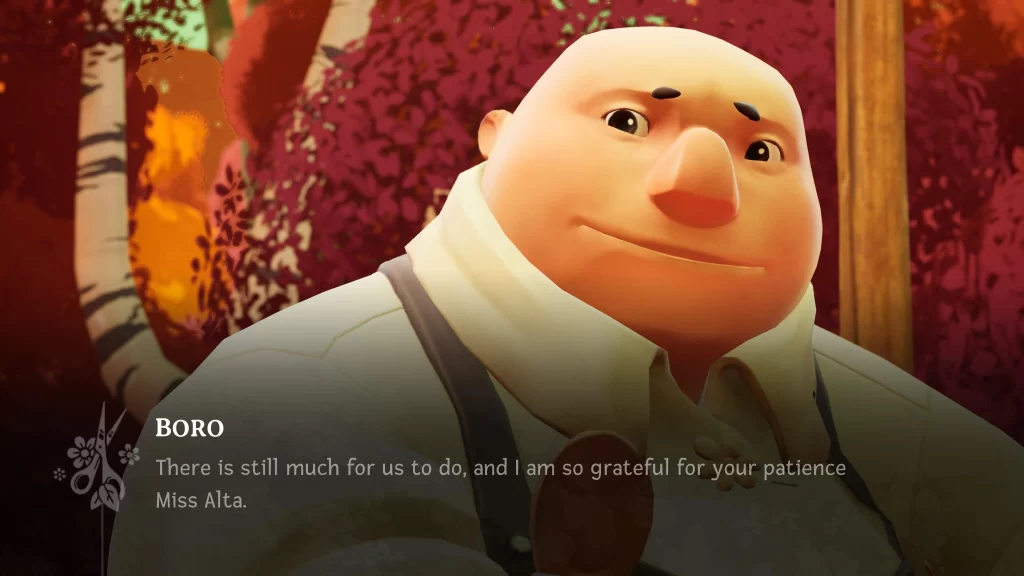
This isn’t the only time either you’ll find the clearing change either. It happens several times in the game, and when the clearing changes, you once again have to say goodbye to the people you meet because they always stop talking. You eventually learn the reason for this: it’s because Alta is the one looking for the change, and the forest is simply responding to her.
The other change I noticed, too, was in the way you could respond as Alta in conversations. The more the game went on, it seemed like the game was allowing you to respond as a changed Alta. Some of the responses could still be harsh and asshole-ish, but there were ones that were kinder or without sass. If someone didn’t want tea, you could simply say “okay” and that was it. If Alta didn’t want to do something because it went against the reason for her being there (resting), she could stand her ground and say no. I went with these replies once they became available as I wanted to embrace a path where it was clear that Alta’s time here had begun to change her.
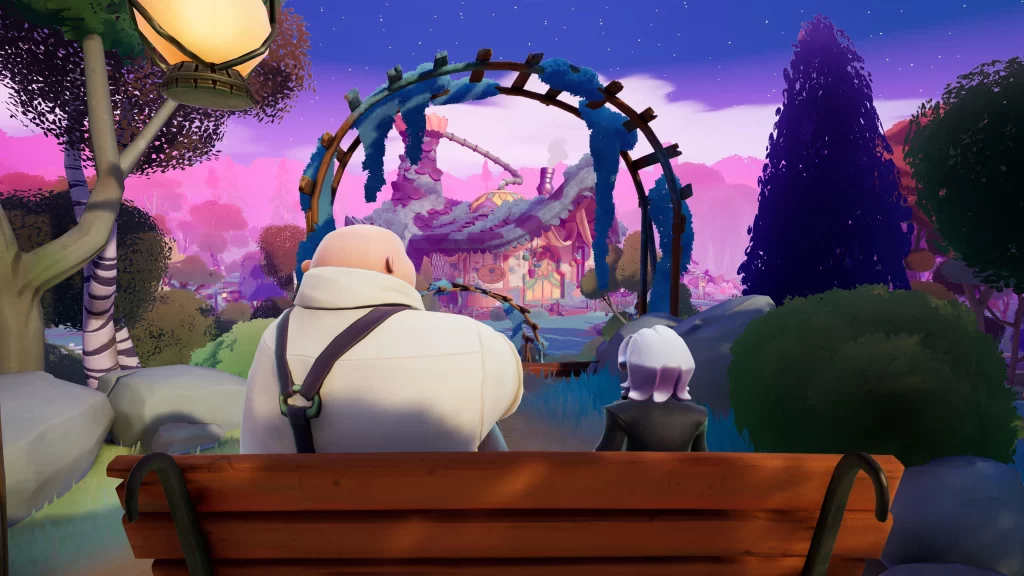
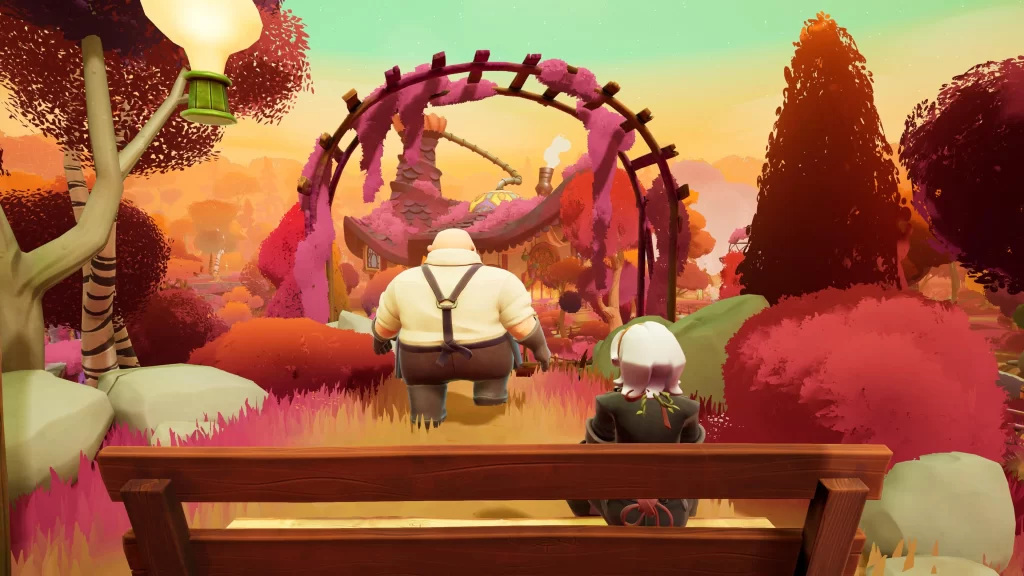
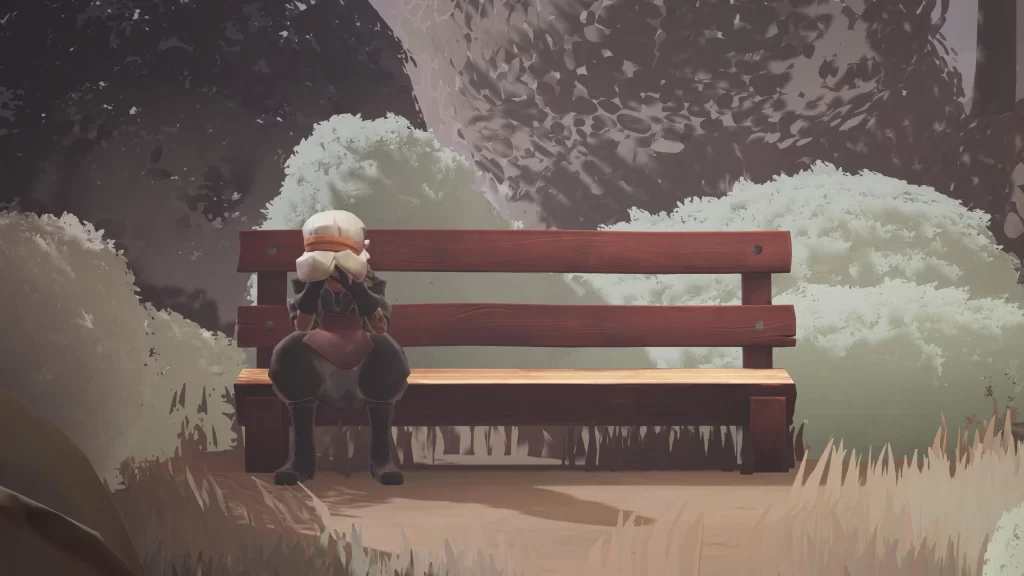
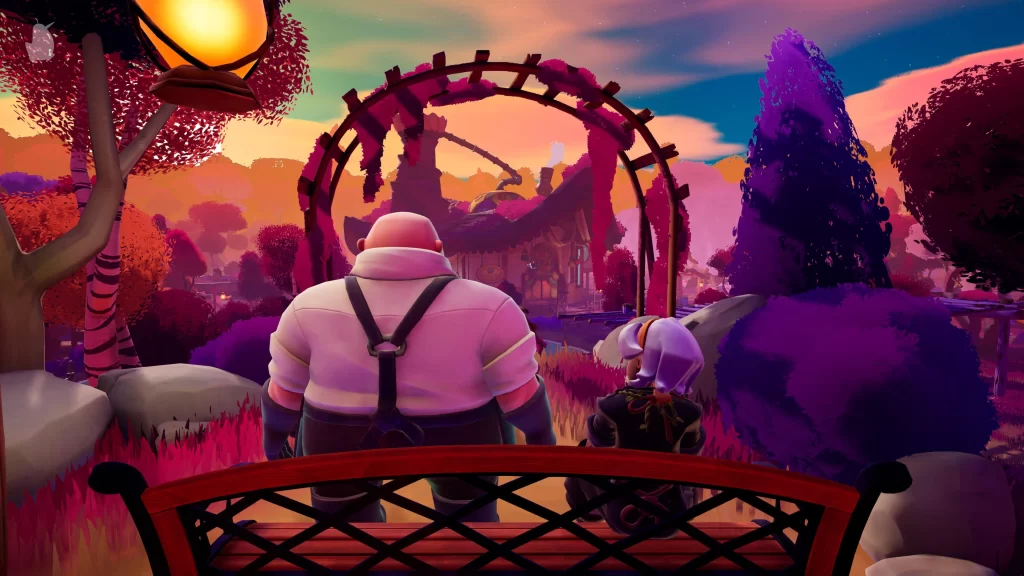
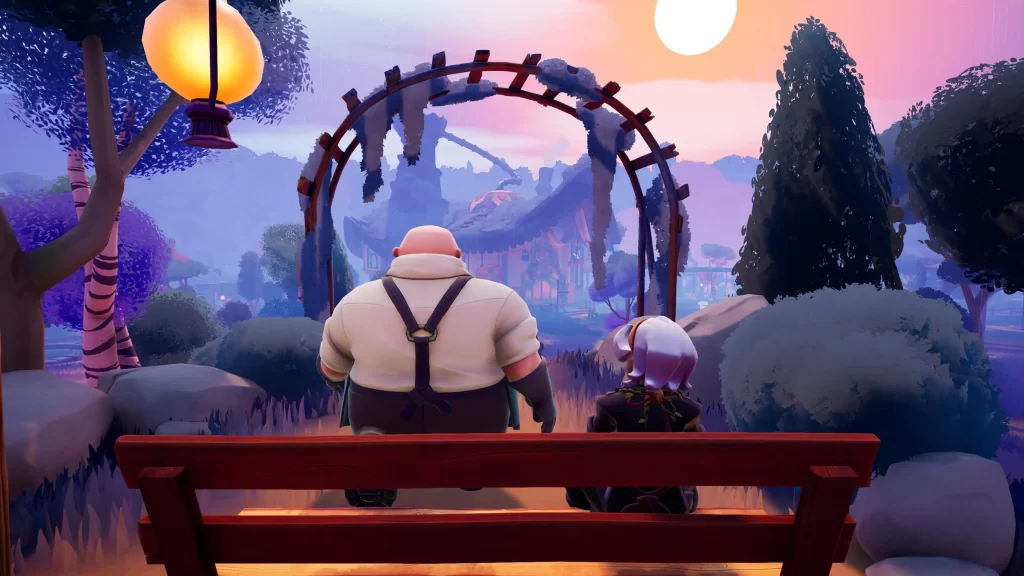
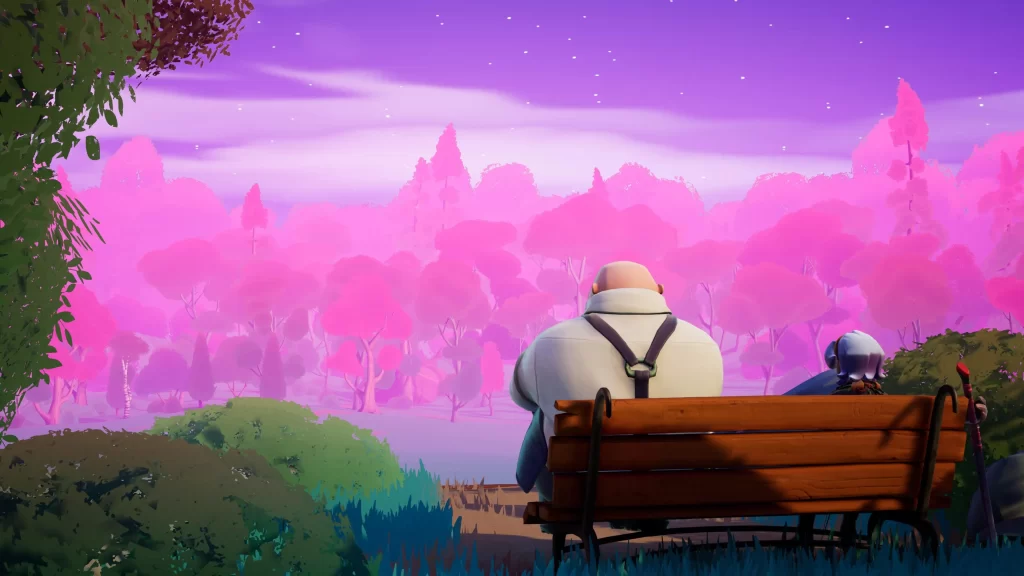
She walked into that clearing with the intention of continuing to be a fighter when she walked out, but I wanted to respond in conversations as someone who began to understand it is okay to rest, it is okay to stop, it’s okay to change who you want to be. I wanted to be an Alta who understood there was nothing to fix because she wasn’t broken. She just had to embrace change, embrace that she couldn’t keep living her life like this.
I personally believe when it came time to leave that clearing, Alta walked out of it understanding what brought her to Wanderstop and what she had to do going forward.
And hopefully, one day, the forest will accept her back again as I want to believe she’ll see Boro again. He’s too amazing of a person to not want that for her.
// Visuals and Sounds
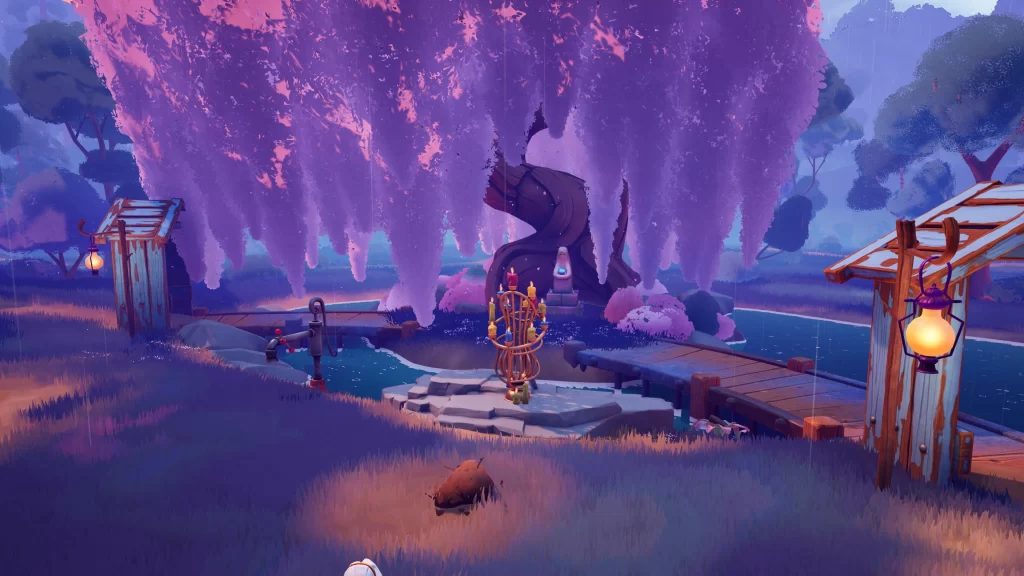
I talked enough about the story and gameplay aspects of Wanderstop so I do want to take a moment to commend the beautiful art design and music of this game. This game is just visually stunning. The colours of the clearing are stunning and so vibrant, I loved sitting on the benches outside and just appreciating the scenery. My favourite spot to sit was by the shrine, near the willow tree since the camera would pull out, giving you a beautiful shot of the space. The art style reminded me of Breath of the Wild/Tears of the Kingdom, since it was very stylized. I especially loved how the trees looked. Instead of individual leaves, it was formed by shapes, something you’d see in the background of an animated show or movie.
The plants were also very well designed. I found them very zany and fun. I loved when they stopped producing fruit because I could put them into planters in my shop.
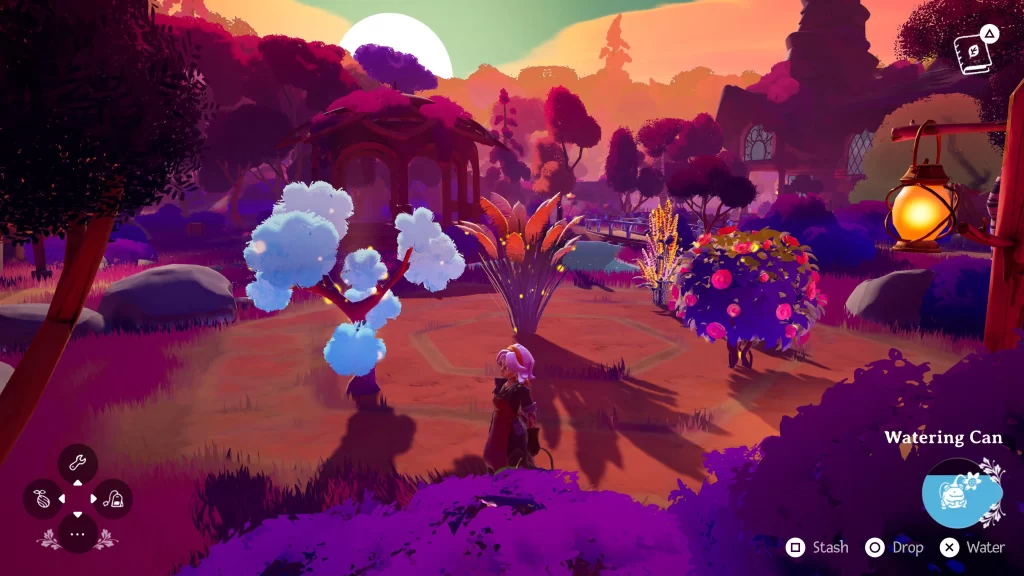
I also loved the style they went with the “cutscenes”. They easily could have used 3D assets for those scenes but instead went with a 2D lineless, painterly art style that I found very striking. It was one of my favourite aspects of the game, including when I played the demo.
The beautiful visuals are paired with the amazing soundtrack. I’m not familiar with C418’s previous work as Minecraft wasn’t my thing, so this was my first time experiencing his music.
The soundtrack to Wanderstop is just so, so good. The music changes (heh, a running theme?) as the story goes on, much like the sound is a character itself. There are moments when you’re talking to characters, and the song will rise and fall with how the character is talking. I also like how every song has a clear end. If you’ve played, you know exactly what I mean. The soundtrack also isn’t looping like it does with most games—another song will simply play after.
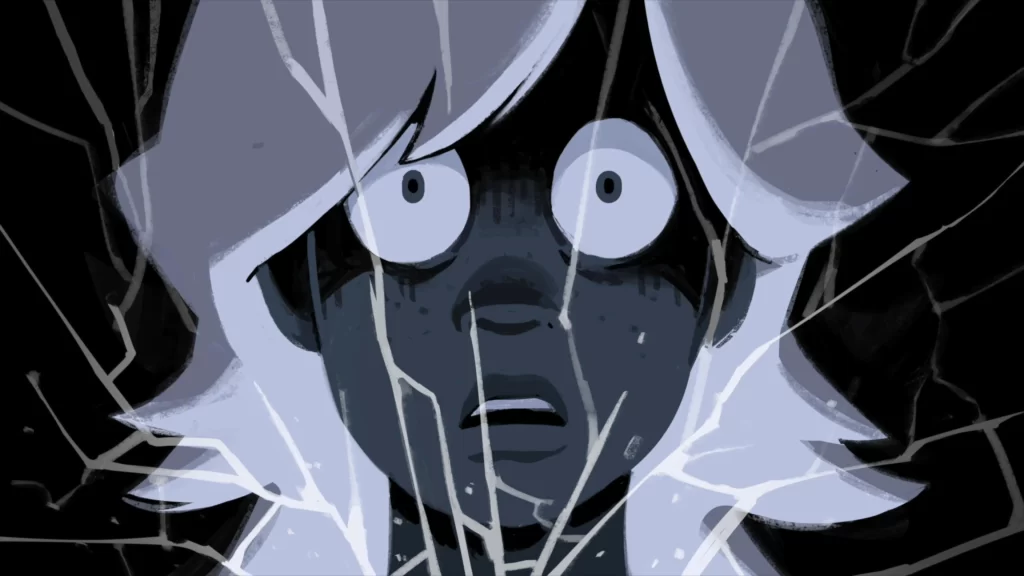
One small detail I really loved was something they did with the options menu in the main menu. I went in there once for something, I can’t remember the reason why now, but I was scrolling down and realised that each time I scrolled onto an option, it made a tone. Since I was in the main menu, the main theme continues to play while you’re in the options menu. I quickly realised each tone I heard as I was scrolling through the menu was a tone from the main theme. I took a video of me playing along to the main theme, just by scrolling through the options menu. It may sound stupid, but I teared up from it because it was just such a cool thing to include in and I could pretend to play along with the theme song. For a game about the importance of taking time to do nothing, it felt fitting that something like this was included. Because here I was, for 3 minutes, playing around in the options menu, so I could play along to the theme song just because I could.
// Trophies
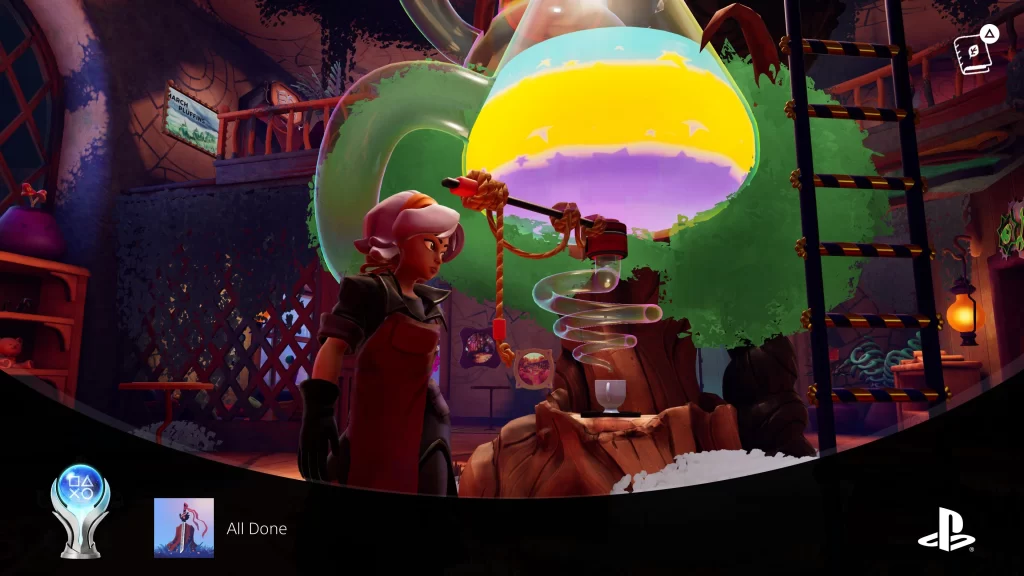
I usually don’t talk about trophies or achievements in games I play because I don’t see a point. But, because I platinumed the game, and with how unconventional getting trophies is in Wanderstop, it felt worth mentioning.
You can plat the game in one playthrough. How?
Well, here’s the thing: no one knows. The trophies just…unlock. No one knows how they unlock or why. The trophies don’t explain it either. I even looked it up online, since I do collect trophies, and I wanted to know how. No one could figure out how they’re unlocked.
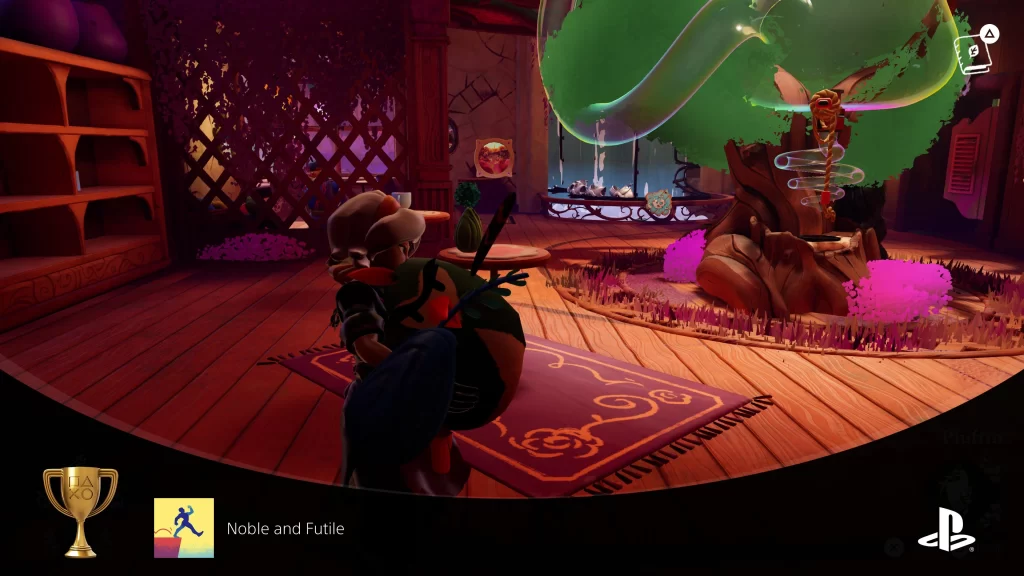
But that’s kind of the point of the game now, isn’t it? What’s the point of telling you how you unlock them, that goes against what the game is trying to say. It just gives you something to chase, something to grind at. So instead, they unlock randomly, without reason. Because the whole point of Wanderstop isn’t to chase after something, it’s supposed to be about enjoying the time you have with it, for as long as you do. And I really liked that.
So if you didn’t take my warning and have read to this point, just play the game and the trophies will unlock. Don’t stress about it.
// Final Thoughts
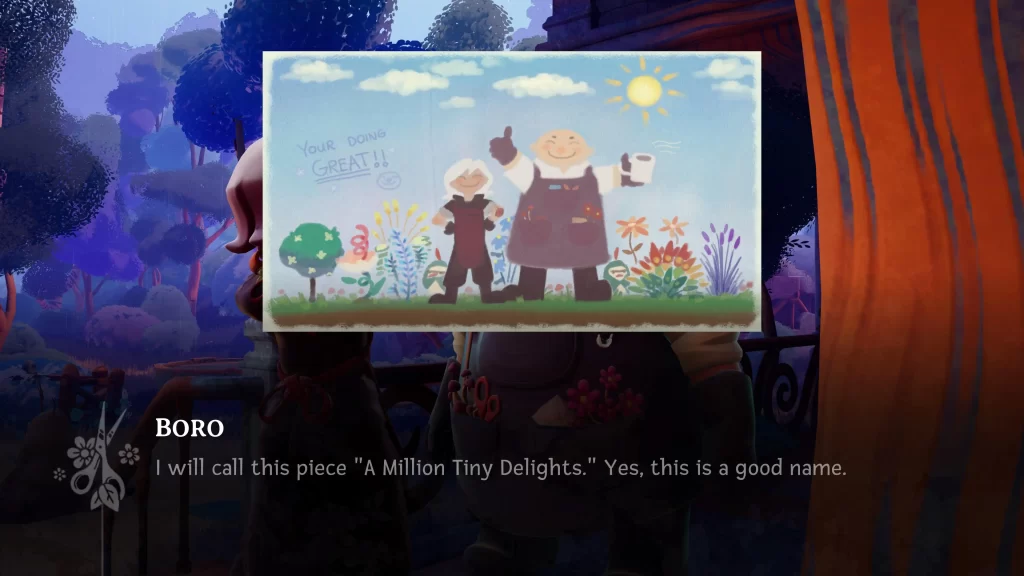
I can’t understate how much I loved this game. When I reached the end, I started getting these pangs because I didn’t want it to end. I didn’t want to leave the best person ever, Boro, because I knew once I made that final shrine trip, that was that. But I knew I had to, and not just because I was going to be writing this, but because at some point, Alta had to continue her path—whatever that means for her now.
I think Wanderstop will easily make my Game of the Year list for this year not just because of it’s amazing visuals and soundtrack or its zany cast of characters. It’ll make my list because of the lessons to be learned: the importance of taking time for yourself and relaxing, the importance of having a balance in your life and not just being focused on a specific thing all the time, otherwise you’ll get burned out, how change is inevitable, and we don’t have to fear it because it can lead to something better.
Like I said in my intro, for a cozy game, I wasn’t expecting to walk away with these lessons, but I’m so glad I have.
That’s why I highly recommend Wanderstop.
